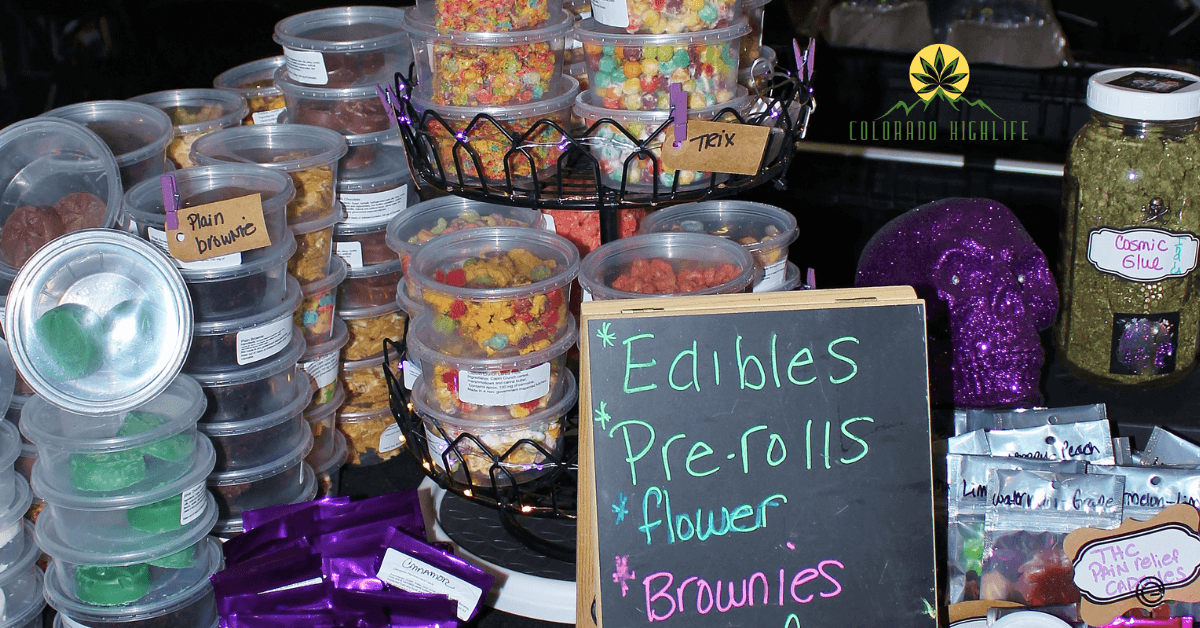Getting “high” on a mountain takes on new meaning!
Colorado, with its sprawling landscapes of mountains, pristine lakes, and dense forests, is renowned not only for its natural beauty but also for its burgeoning legal cannabis market. Among the myriad of cannabis offerings, edibles, with their discretion and variety, have become especially popular with both locals and tourists.
However, consuming these in the elevated regions of Colorado, like Denver, Aspen, and Vail, introduces a unique set of considerations. Before you take that delicious bite, here’s a comprehensive guide on what to keep in mind.
Effects of High Altitude on the Body
When you venture into elevated regions, you are introduced to an environment with thinner air, which implies reduced oxygen levels. Many visitors, especially those from sea level areas, often experience symptoms like dizziness, mild headaches, or a fleeting shortness of breath.
This phenomenon, colloquially referred to as ‘altitude sickness’, is common even without introducing cannabis into the equation. Furthermore, the mountainous terrain and the generally drier climate can make you prone to dehydration, especially if you’re engaging in physical activities.
Potency of Edibles at High Altitude
While scientific studies are still ongoing, there is anecdotal evidence to suggest that the effects of cannabis might feel intensified at higher altitudes. This can be a bit tricky with edibles as they inherently have a delayed onset. Unlike smoking or vaping, where the effects are almost immediate, edibles need to be digested before the THC enters your bloodstream, which could lead to a wait of anywhere from 30 minutes to 2 hours.
The combination of delayed onset and potentially enhanced effects can sometimes mislead users into consuming more than necessary. Many people come to Colorado and get intoxicated with only half of their normal alcohol consumption they would need at home.

The Principle of Patience and Slow Beginnings
For the uninitiated, or even the seasoned cannabis user in a new environment, it’s wise to adopt a principle of patience. With edibles, always start with a smaller portion than you might usually consume. This not only ensures that you don’t overdo it but also allows you to gauge the unique interaction between the altitude and the cannabis. Remember, while you can always decide to consume more later, once you’ve eaten an edible, there’s no turning back.
When consuming edibles, moderation and patience are key. Start with a small dose, especially if you’re unfamiliar with the product or your tolerance level. Remember that edibles can take anywhere from 30 minutes to 2 hours to kick in, with effects potentially lasting much longer than other forms of cannabis consumption.
Always read the label for dosing recommendations and be aware that the effects can be more intense and longer-lasting than smoking or vaping. Avoid mixing with alcohol or other substances, and ensure you’re in a safe, comfortable environment when experimenting with new products.
Stay Hydrated
In high-altitude regions, staying hydrated is of paramount importance. Given the drier climate, you’ll find yourself reaching for your water bottle more frequently. When consuming cannabis, especially in the form of edibles which can cause cottonmouth, it becomes even more vital to drink water consistently to prevent dehydration.

Exercising Caution with Alcohol
Alcohol can have a heightened effect at high altitudes. When combined with cannabis, especially edibles, the effects of both substances can amplify. This can lead to increased dehydration, impaired judgment, and in some cases, even nausea. It’s advisable to consume responsibly and be aware of how each substance affects you.
Navigating Local Laws
Though cannabis is legal in Colorado, it’s essential to be well-informed about local cannabis regulations. Different regions might have specific rules about where you can consume, how much you can buy at once, and how much you’re allowed to possess. Staying within legal boundaries ensures a hassle-free experience.
Recognizing Altitude Sickness
If you’ve been in a high-altitude region and you begin to feel unusually fatigued, experience severe headaches, nausea, or find yourself short of breath, it could be signs of altitude sickness. Introducing cannabis, especially potent edibles, might complicate your body’s response. Always prioritize your health, and if these symptoms persist or become severe, don’t hesitate to seek medical attention.
Here are five proactive steps you can take to preempt altitude sickness:
- Acclimatize Gradually: If possible, spend a few days at a slightly lower altitude before ascending to higher elevations. This allows your body to gradually adjust to the decreased oxygen levels.
- Stay Hydrated: Drink plenty of water, as dehydration can exacerbate the symptoms of altitude sickness. The drier air at high altitudes can lead to increased water loss from the body.
- Limit Alcohol and Caffeine: Both can lead to dehydration and disrupt sleep. It’s best to avoid or limit their intake, especially during your first few days at a higher altitude.
- Eat Carbohydrate-Rich Foods: Consuming foods high in carbohydrates can help in providing energy and mitigating the effects of altitude sickness.
- Consider Medication: Consult with a healthcare provider about medications like acetazolamide (Diamox) that can aid in altitude acclimatization if you know you’re prone to altitude sickness or if you’re planning a rapid ascent.
In essence, while Colorado’s high-altitude regions offer a unique backdrop to explore the world of edibles, it’s crucial to approach the experience with knowledge and caution. Stay informed, respect your body’s signals, and ensure you’re in a safe environment to enjoy the panoramic beauty of Colorado alongside its culinary cannabis delights.

